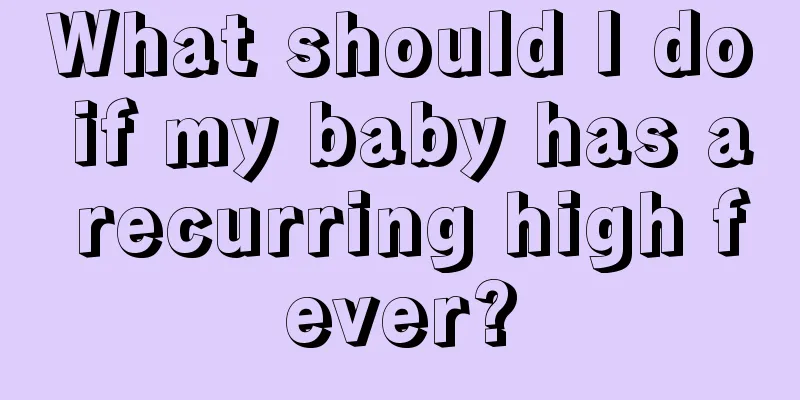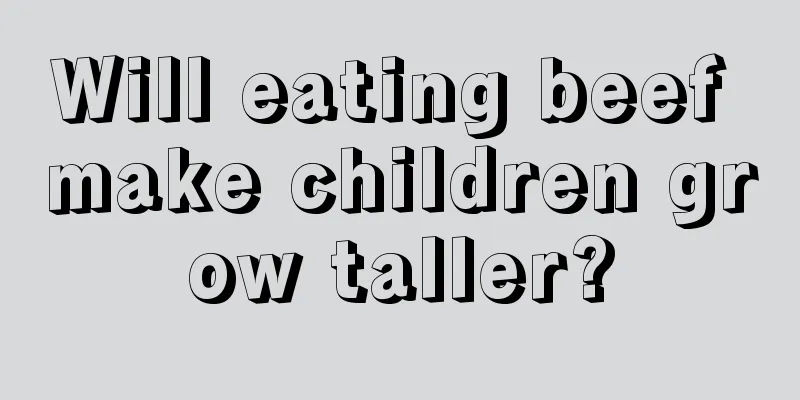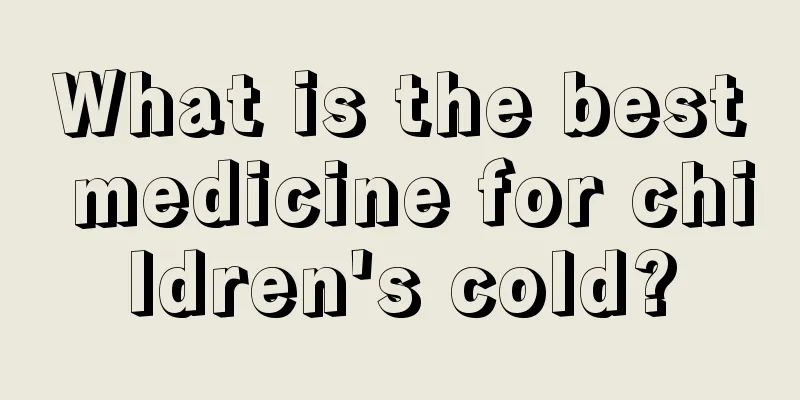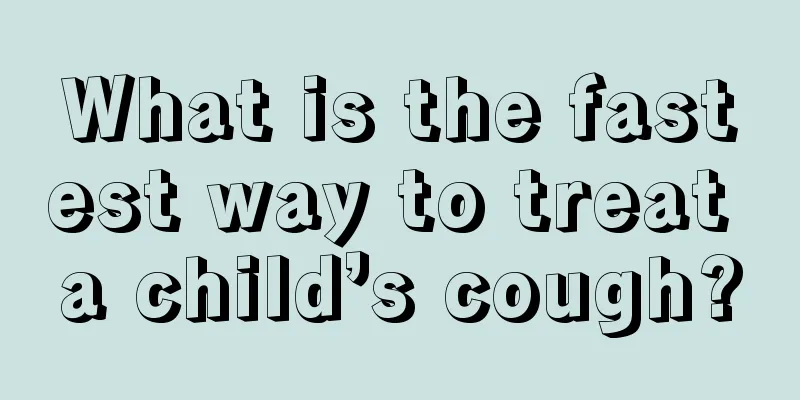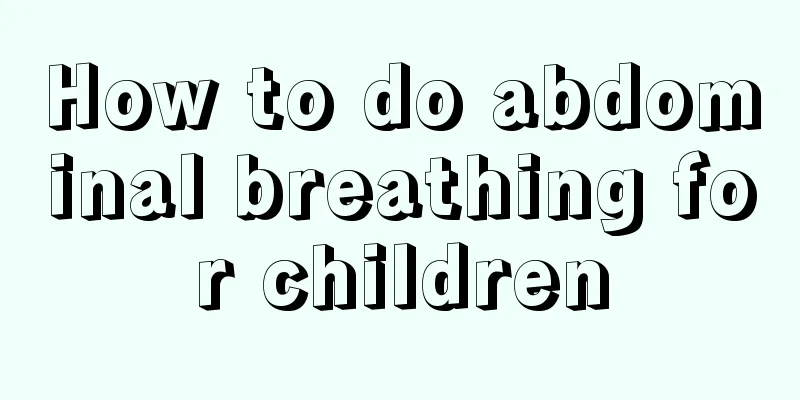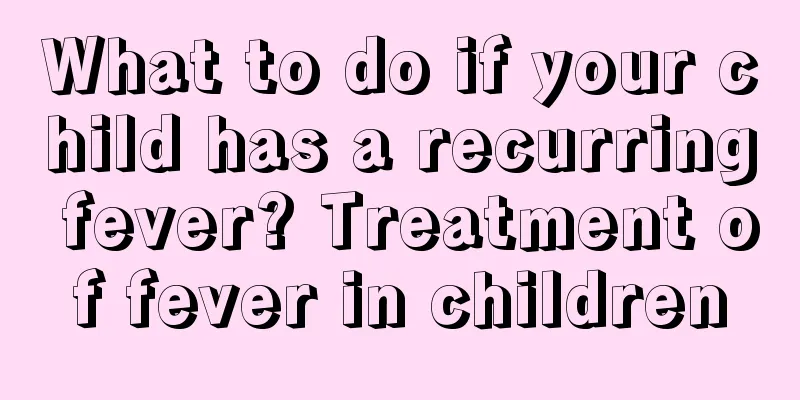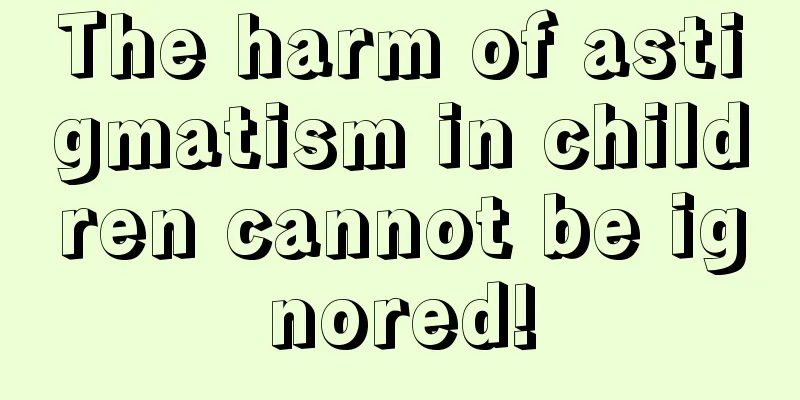What to do if your child has a persistent high fever

|
High fever is a particularly dangerous symptom for children with low resistance. If parents fail to discover their child's high fever in time, do not perform physical cooling or send the child to the hospital in time, it will cause other problems in the child's body. For some children with persistent high fever, parents must provide good care for them. So, what should we do if our child has a persistent high fever? 1. What causes a child to have a fever? 1. External factors: Children's body temperature is affected by the external environment, such as wearing too many clothes when it is hot, drinking too little water, and poor ventilation in the room. 2. Internal factors: illness, cold, tracheitis, sore throat or other diseases. 3. Other factors: such as preventive injections, including measles, cholera, diphtheria, pertussis, tetanus and other reactions. 2. What to do if your child has a persistent fever 1. Reduce clothing and quilts: When your child has a fever, remember not to let him wear too many clothes or cover him with too thick quilts. This traditional method of "covering the body to sweat" is not conducive to heat dissipation and fever reduction. Instead, it may cause febrile convulsions due to overheating. For many young babies, the body temperature can be lowered by simply reducing the number of clothes and blankets. 2. Drink more water: It helps to sweat and dissipate heat. In addition, water has the function of regulating temperature, which can lower body temperature and replenish the water lost by the body. 3. Cold compress: This method is simple and easy. Apply a cold towel to the forehead. After the towel becomes hot, soak it in cold water and apply it again. For older children, using cold water bags or ice bags may be more effective. 4. Wipe the whole body with warm water or take a bath: Undress the child, rub the whole body with a warm towel or take a bath. This can dilate the blood vessels in the skin and increase heat dissipation. In addition, when water evaporates from the body surface, some heat will also be lost. 5. Low-temperature chamber method: Place the sick child in an environment with a room temperature of about 26°C to slowly lower the body temperature. In order to allow the skin to come into contact with the outside air and help cool down, people need to wear less clothes. If conditions permit, use air conditioning to lower the room temperature. 3. Things to note when a child is sick with a fever 1. It is not a big deal if the temperature is below 38.5℃, but it should not be taken lightly. Always observe your child's mental state, measure his or her body temperature, and give him or her water frequently. Don't dress your child in too many clothes. Keep the room ventilated and prepare antipyretics for babies over 6 months old. 2. If the temperature is between 38.5℃ and 39.5℃, take antipyretics according to the instructions. Ten minutes after taking the medicine, put more clothes on your child. After half an hour, take off the extra clothes and wipe the child's body with warm water. You will see sweat coming out immediately and the child's body temperature will slowly drop. 3. Fever itself means that there is a virus in the child's body, and the child is also fighting the virus. The problem will not be solved in one go. The temperature will go up again within 4-6 hours, and you can proceed to the second step. 4. After 4-6 times, the child's temperature will be under control. 5. If the fever is above 39.5℃, you must go to the hospital. There will be no damage to the brain within 4-8 hours, but the longer the time, the worse it is for the child. At this time, you can use alcohol to wipe the palms and soles of your child's feet, but don't wipe too much. This method can quickly reduce the temperature. If there is no alcohol, you can directly wipe the child's body with tap water and then go to the hospital immediately. |
<<: Two month old baby has umbilical hernia
>>: Two-month-old baby blows bubbles_Two-month-old baby blows bubbles
Recommend
3-year-old child with rhinitis
Adults feel miserable after suffering from rhinit...
How long is the best sleep for babies?
Sleeping is something we must do every day. Only ...
What are the benefits of eating scallop porridge for children?
Abalone is also called dried scallop. In fact, to...
What toothpaste is good for a three-year-old baby?
When children are young, parents should cultivate...
What to do if your two-year-old baby has a runny nose
It is very important for the baby to be healthy w...
Can children's tuberculosis be cured?
Pulmonary tuberculosis is the most common type of...
Is it OK for a baby boy to have his hands cut off?
The lines on babies' palms are different. Acc...
What diseases are related to the blue veins on the baby's head?
Parents pay a lot of attention to their children,...
The dangers of eating chocolate for children
Children like to eat sweets, especially chocolate...
What is the normal body temperature of the baby during the month?
The baby may not be as comfortable after birth as...
Child speaks late
After a child is born, his or her parents are pre...
The dangers of malnutrition in children
In recent years, most of the cases of malnutritio...
Why is the child late in speaking?
Many young parents hope that their babies can gro...
What department should I go to for frequent urination in children?
Frequent urination does not only occur in adults,...
What to do if children have tooth decay and toothache?
What should we do if children have tooth decay an...
